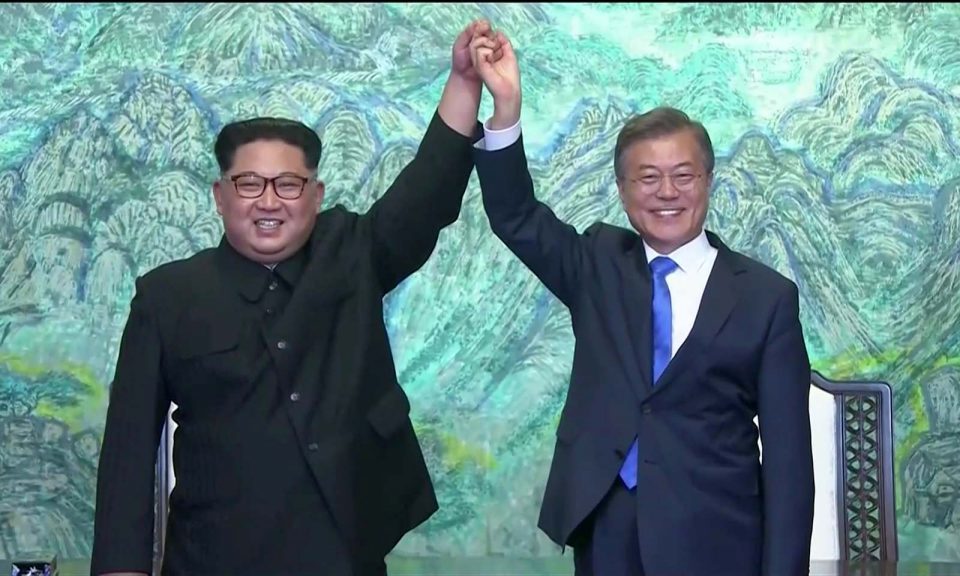
After a day-long summit, leaders of the two Koreas hugged one another, opening "a new era of peace". They pledged that there would be no further conflict on the peninsula and vowed to upgrade relations in multiple spheres.
But while they agreed on "total denuclearization," no details of steps to achieve this were included, suggesting the issue has been deferred to the upcoming North Korea-US summit, expected in May or June.
After a day of talks between North Korean leader Kim Jong-un and South Korean President Moon Jae-in and their entourages at the truce village of Panmunjom in the Demilitarized Zone, the two sides released the "Panmunjom Declaration for Peace, Prosperity and Unification of the Korean Peninsula."
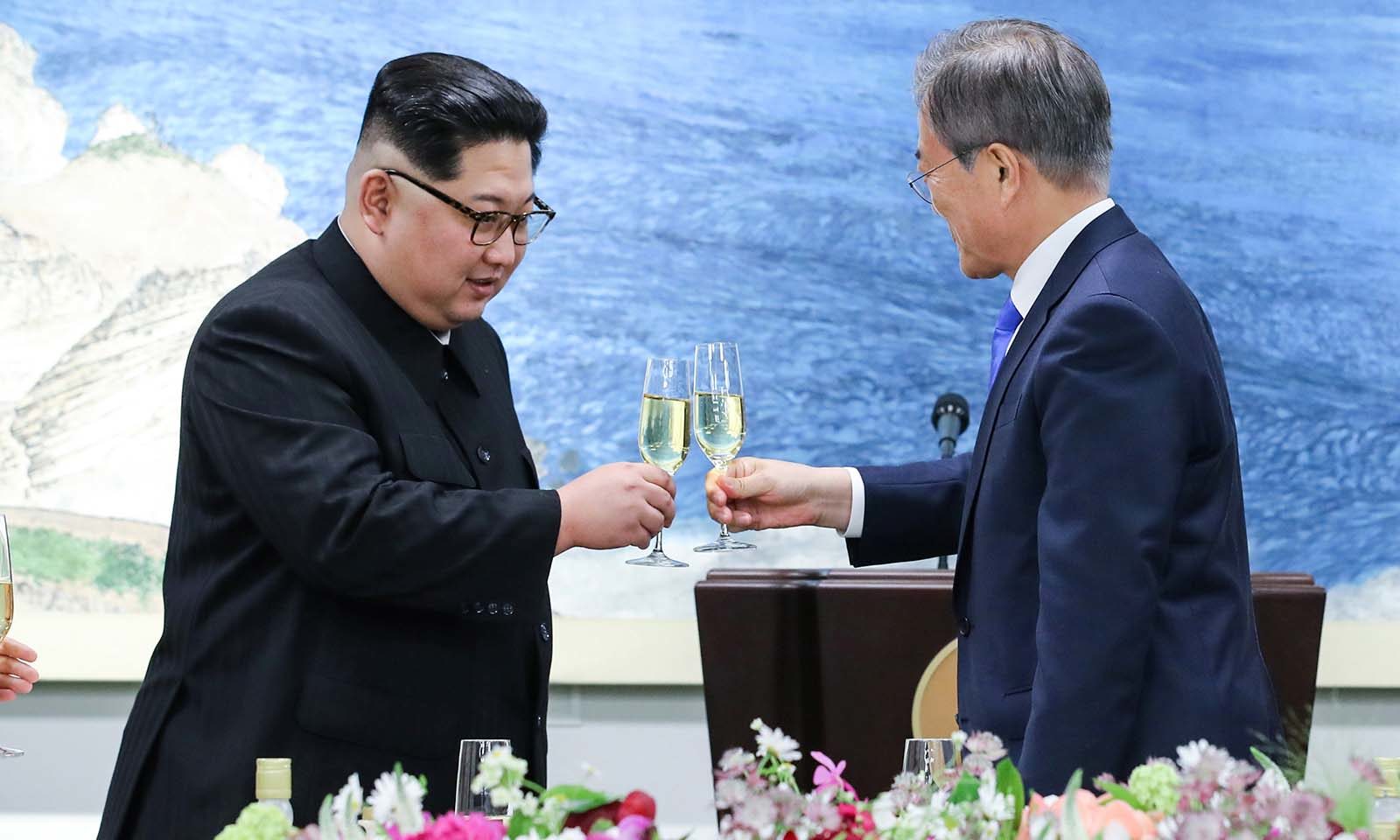
In post-summit statements outside Peace House, a conference center on the southern side of Panmunjom, Moon called the declaration a "precious and valuable agreement," noting that, "Chairman Kim and I have complete confidence in each other" and "there is no turning back for us." The "bold decision" by Kim was "a good gift to the world," he added.
"The road I have used today - I hope every Korean citizen can use this road," said Kim, referring to the route he had taken from Pyongyang to Panmunjom, leading him across the inter-Korean border. "I believe the Panmunjom Declaration will never let us repeat our past mistakes."
Regarding the nuclear crisis, Moon said: "Today, Chairman Kim and I have agreed that total denuclearization will be achieved...we affirmed that is our goal."
But in his remarks, Kim made no mention of the nuclear weapons and missile programs that have led to a state of high risk in his relations with the United States.
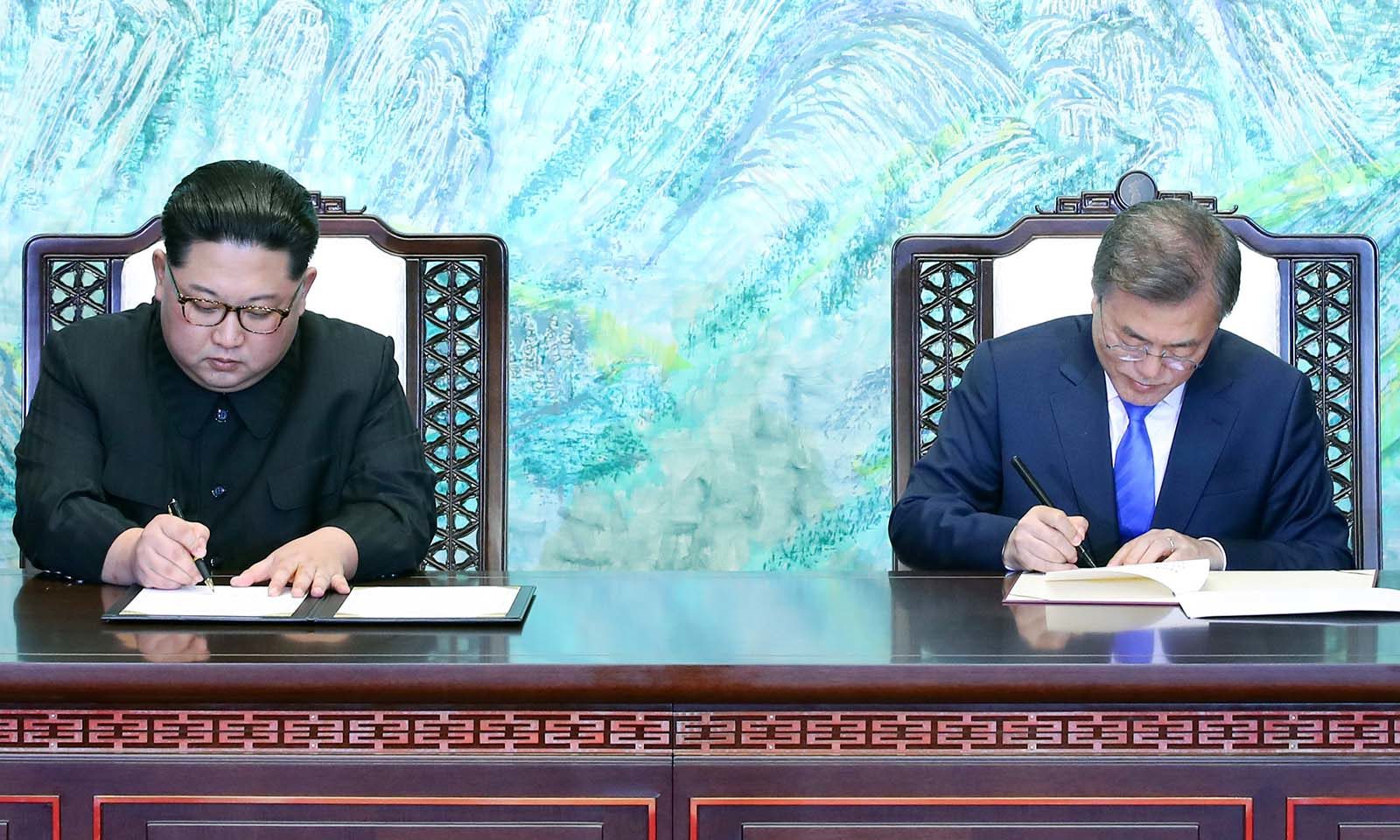
Inter-Korean cooperation
The declaration will facilitate "groundbreaking advancements in inter-Korean relations," allowing Koreans to determine "the destiny of the Korean nation on their own accord" - an apparent reference to foreign interference that has, notably in the 20th century, often proved tragic for a peninsula which suffered colonization, division and war. The statement refers to "dialogs and negotiations in various fields," and "active cooperation, exchanges, visits and contacts at all levels."
Promisingly, the two states - which lack any diplomatic ties or any communication apparatus, beyond telephone hotlines - agreed to establish a "liaison office" in Kaesong to "facilitate close consultation."
Kaesong, an ancient capital directly north of the DMZ, is strategically located north of Seoul and south of Pyongyang. It is the site of the inter-Korean industrial complex, which merged North Korean labor with South Korean companies' capital and management. It opened in 2004 but was shuttered by Seoul in 2016 amid inter-Korean tensions.
Cooperation will also involve the resolution of issues that "resulted from the division of the nation" - a reference to divided families. In spoken remarks, Moon also made reference to a postal service between the two countries.
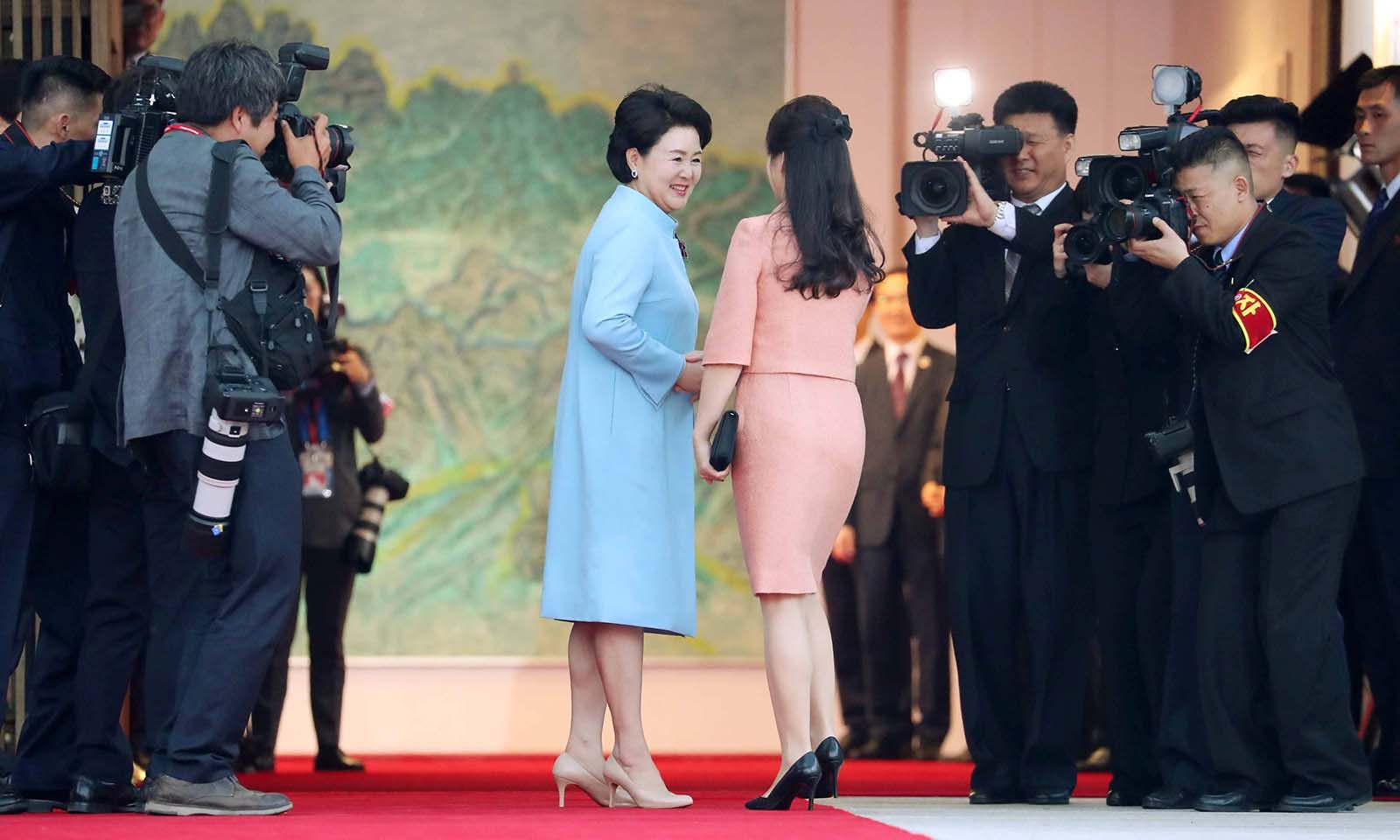
As a "first step," the two sides agreed to connect and modernize rail and road links in the east of the peninsula - and also between the South Korean capital of Seoul, and the North Korea city of Sinuiju, on the North Korea-China border. Critically, the latter lines would link Seoul with Kaesong and North Korea's capital Pyongyang.
Reducing military tensions
As per the declaration, the two Koreas "agree to completely cease all hostile acts against each other... including land, sea and air" and to cease all propaganda broadcasts and leaflet drops along the DMZ. They agreed "to prevent accidental military clashes and guarantee safe fishing activities," in the flashpoint Yellow Sea - scene of multiple fatal naval clashes over the last two decades. It is home to rich fishing grounds and a vague demarcation line.
The declaration also says it will bring "an end to the current unnatural state of armistice" and invoke meetings with outside forces, including the United States and China. The two latter nations were both belligerents and signatories to the 1953 armistice that halted fighting in the Korean War. A peace treaty to end the state of war had previously been revealed as a summit goal.
General-level military talks will be convened in May.
Finally, the declaration confirmed the "common goal" of "realizing, through complete denuclearization, a nuclear-free Korean peninsula," and agreed to seek the "support and cooperation of the international community" to this end.
Early reactions
The lack of detail on denuclearization raised some experts' eyebrows.
"The declaration is long on generalization, but contains absolutely no detail, meaning that much now hinges on successful discussion between the US and North Korea later in the year," said Chris Green of the International Crisis Group. "But denuclearization was never going to be the focus of this inter-Korean meeting because it has always been an issue between North Korea and the US."
Kim is expected to meet US President Donald Trump in May or June.
Still, pundits were upbeat on the inter-Korean cooperation elements.
"That Moon agreed to go to Pyongyang indicates a willingness to systemize dialogue in the future,' said Daniel Tudor, co-author of Korean Confidential. "It shows a sort of long-termism that was absent from previous summits."
The two previous inter-Korean summits were both one-off affairs from the South Korean presidents involved.
Strong symbolism, good vibes
The day had started with Kim walking across the Military Demarcation Line - the inter-Korean border in Panmunjom - and being greeted by Moon, after which the two inspected a traditional South Korean honor guard. After their morning discussion session, there was a moment of comedy when, after separate lunches, Kim returned, via limousine - with his bodyguard detachment jogging, in suits, alongside his vehicle.
While watering and adding soil to a newly planted pine tree in the truce village, Kim used soil from the South and water from Seoul's Han River, while Moon added soil from the North and water from Pyongyang's Daedong River.
Following the tree dedication, the two leaders walked alone to a footbridge, where they sat and talked alone - without aides or entourages - for approximately half an hour. No details were released of that discussion.
But at the subsequent signing of the declaration in Peace House, the two leaders held up each others' hands, beamed at one another and hugged - a more comradely display than any seen at the two previous inter-Korean summits.
At a subsequent dinner with their entourages and first ladies, the chemistry between Kim and Moon looked assured, with both beaming. "We had a historic encounter and opened a new chapter in history," said Moon prior to his dinner toast.
"Once again, this is a precious moment" Kim responded. He also said, "I am willing to meet President Moon, if necessary any time," adding that they could also talk over a special hotline connected last week.
At Imjin-gak - a complex of war memorials, outdoor artworks and observation decks looking into the north, which lies just south of the road entrance to Panmunjom - citizens had gathered to both support and protest against the summit.
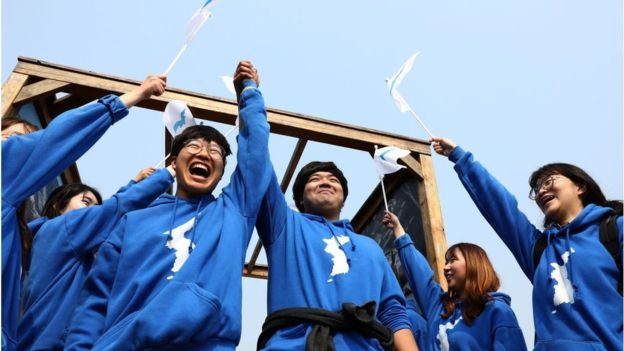
Nearby, a small but noisy group of perhaps 100 right-wing protesters - mainly elderly, with many wearing military uniforms with medals on them - were less ebullient. Holding signs reading, "It's time to bomb North Korea" and "Stop North Korean genocide," they conducted a noisy, but orderly demonstration.
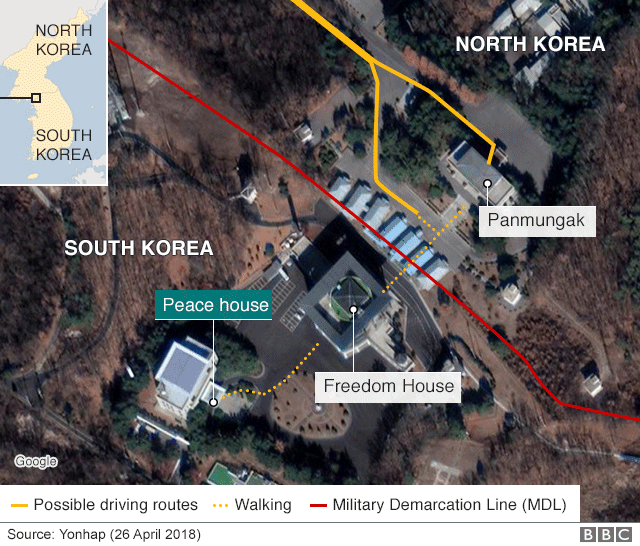
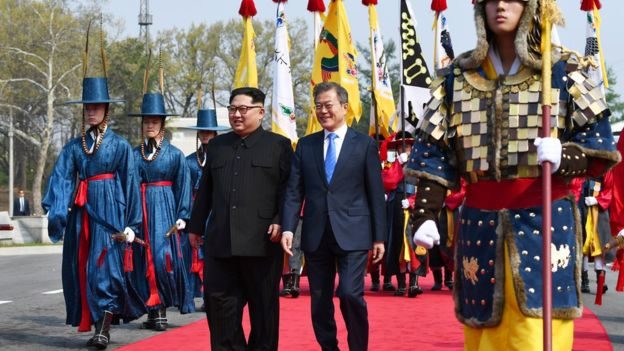
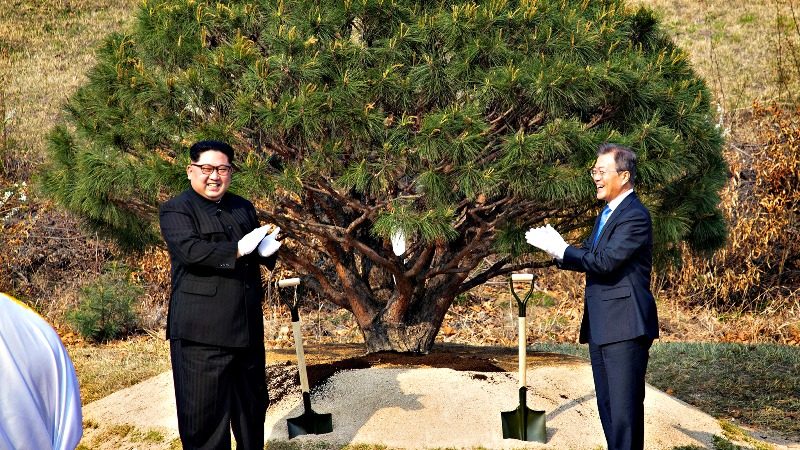



Comment: South Korea's Foreign Minister told CNN's Christiane Amanpour something that likely made her throw up a bit in her mouth... that Donald Trump deserves a lot of credit for making this historic meeting happen...
Trump in turn gave a shout out to Xi Jinping, who was no doubt also instrumental:
In summary, the two Koreas have agreed to: